Reduced Friction and Excellent Anti-Wear Performance of QBe2 Beryllium Bronze against 38CrMoAlA Steel in Pneumatic Downhole Motor under Grease Lubrication
Abstract
:1. Introduction
2. Experimental
2.1. Test Materials and Setup
2.2. Wear Test and Sample Characterization
3. Results and Discussion
3.1. Coefficient of Friction and Wear Loss
3.2. Worn Surface of the Tribo-Pairs
3.3. Friction and Wear Mechanism
4. Conclusions
- (1)
- The average coefficient of friction and the wear volume are very low, showing excellent anti-friction and anti-wear performance. During the test, the surface roughness of the steel plate was decreased, while that of the copper pin was slightly scratched by the asperities on the relative harder surface of the steel plate, thus resulting in a rougher surface. Cu and Fe oxidize and form composite oxides on the friction surface, which could reduce the friction of the contact surface.
- (2)
- Compared with the dry sliding friction without lubrication, the performance of the present QBe2 beryllium bronze against 38CrMoAlA steel tribo-pair was greatly improved by adding LCG grease. The adding of grease could protect the copper components and improve the service life of the pneumatic downhole tool to 150 h, which can basically meet the requirements of working conditions in practical drilling. These results provide a solid support for the practical application of the reported pneumatic downhole tools.
Author Contributions
Funding
Data Availability Statement
Conflicts of Interest
References
- Johnson, P.W.; Lyons, W.C. Development and validation of a model for predicting the performance of a downhole pneumatic turbine-powered drilling engine. J. Pet. Sci. Eng. 1992, 8, 119–132. [Google Scholar] [CrossRef]
- Liang, C.F.; Wang, Y.; Zhang, K.; Peng, Z.J. Dry sliding behavior of QBe2 beryllium bronze against 38CrMoAlA steel in pneumatic downhole motor under different loads. Metals 2021, 11, 459. [Google Scholar] [CrossRef]
- Liang, C.F.; Wang, Y.; Peng, Z.J. Influence of surface roughness of stator on dry sliding behavior again rotor in pneumatic downhole motor. J. Mater. Eng. Perform. 2023. [Google Scholar] [CrossRef]
- Liu, W.M.; Ye, C.F.; Gong, Q.Y.; Wang, H.Z.; Wang, P. Tribological performance of room-temperature ionic liquids as lubricant. Tribol. Lett. 2002, 13, 81–85. [Google Scholar] [CrossRef]
- Jisheng, E.; Gawne, D.T. Influence of lubrication regime on the sliding wear behaviour of an alloy steel. Wear 1997, 211, 1–8. [Google Scholar] [CrossRef]
- Yeong, S.K.; Luckham, P.F.; Tadros, T.F. Steady flow and viscoelastic properties of lubricating grease containing various thickener concentrations. J. Colloid Interface Sci. 2004, 274, 285–293. [Google Scholar] [CrossRef] [PubMed]
- Rezasoltani, A.; Khonsari, M.M. On the correlation between mechanical degradation of lubricating grease and entropy. Tribol. Lett. 2014, 56, 197–204. [Google Scholar] [CrossRef]
- Chen, J.G. Synthesis, characterization, and tribological behavior of neopentyl polyol ester-based and mixed oil-based titanium complex grease. Tribol. Lett. 2010, 40, 149–154. [Google Scholar] [CrossRef]
- Baart, P.; Vorst, B.; Lugt, P.M.; Ostayen, R. Oil-bleeding model for lubricating grease based on viscous flow through a porous microstructure. Tribol. Trans. 2010, 53, 340–348. [Google Scholar] [CrossRef]
- Ye, C.F.; Liu, W.M.; Chen, Y.X.; Yu, L.G. Room-temperature ionic liquids: A novel versatile lubricant. Chem. Commun. 2001, 21, 2244–2245. [Google Scholar] [CrossRef] [PubMed]
- Wang, S.; Yue, W.; Fu, Z.Q.; Wang, C.B.; Li, X.L.; Liu, J.J. Study on the tribological properties of plasma nitrided bearing steel under lubrication with borate ester additive. Tribol. Int. 2013, 66, 259–264. [Google Scholar] [CrossRef]
- Blanchet, T.A.; Shaffer, S.J.; Christiaen, A.C.; Kolly, J.M. Grease-lubricated wear of aluminum bronze for jackscrew application. Wear 2003, 255, 1238–1250. [Google Scholar] [CrossRef]
- ASTM G99-04; Standard Test Method for Wear Testing with a Pin-on-Disk Apparatus. ASTM International: West Conshohocken, PA, USA, 2004.
- Lugt, P.M. A review on grease lubrication in rolling bearings. Tribol. Trans. 2009, 52, 470–480. [Google Scholar] [CrossRef]
- Barreca, D.; Gasparotto, A.; Tondello, E. CVD Cu2O and CuO nanosystems characterized by XPS. Surf. Sci. Spectra 2007, 14, 41–51. [Google Scholar] [CrossRef]
- Sun, Y.X.; Song, C.F.; Liu, Z.L.; Li, J.W.; Wang, L.; Sun, C.; Zhang, Y.Z. Tribological and conductive behavior of Cu/Cu rolling current-carrying pairs in a water environment. Tribol. Int. 2019, 143, 106055. [Google Scholar] [CrossRef]
- Brion, D. Etude par spectroscopie de photoelectrons de la degradation superficielle de FeS2, CuFeS2, ZnS et PbS a l’air et dans l’eau. Appl. Surf. Sci. 1980, 5, 133–152. [Google Scholar] [CrossRef]
- Oscarson, D.W.; Huang, P.M.; Defosse, C.; Herbillon, A. Oxidative power of Mn (IV) and Fe (III) oxides with respect to As (III) in terrestrial and aquatic environments. Nature 1981, 291, 50–51. [Google Scholar] [CrossRef]
- Asempah, I.; Xu, J.H.; Yu, L.H.; Luo, H.; Liu, L.J.; Yu, D.; Ding, N. The role of copper incorporation on the microstructure, mechanical and tribological properties of TiBN-Cu films by reactive magnetron sputtering. J. Alloys Compd. 2019, 801, 112–122. [Google Scholar] [CrossRef]


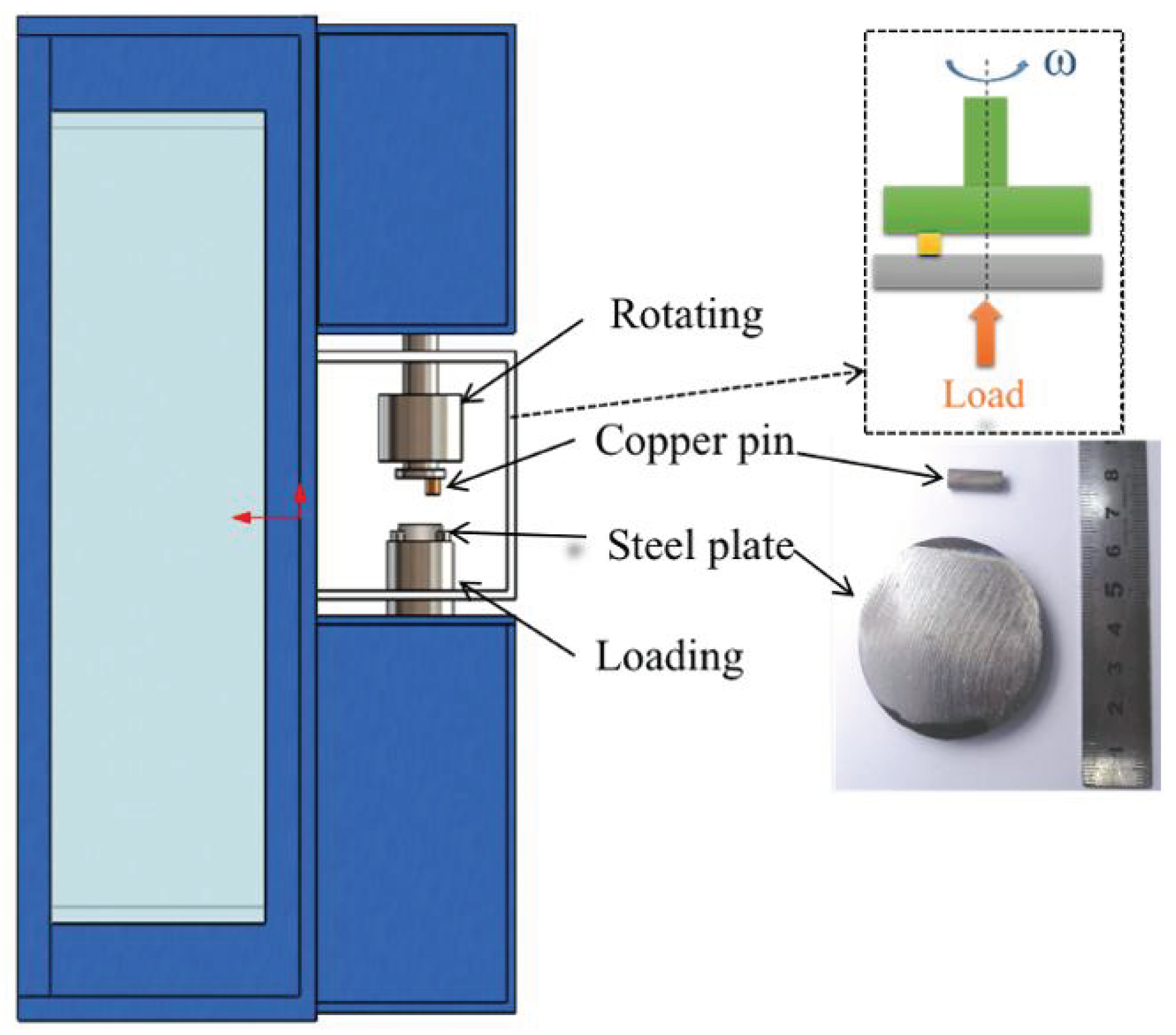
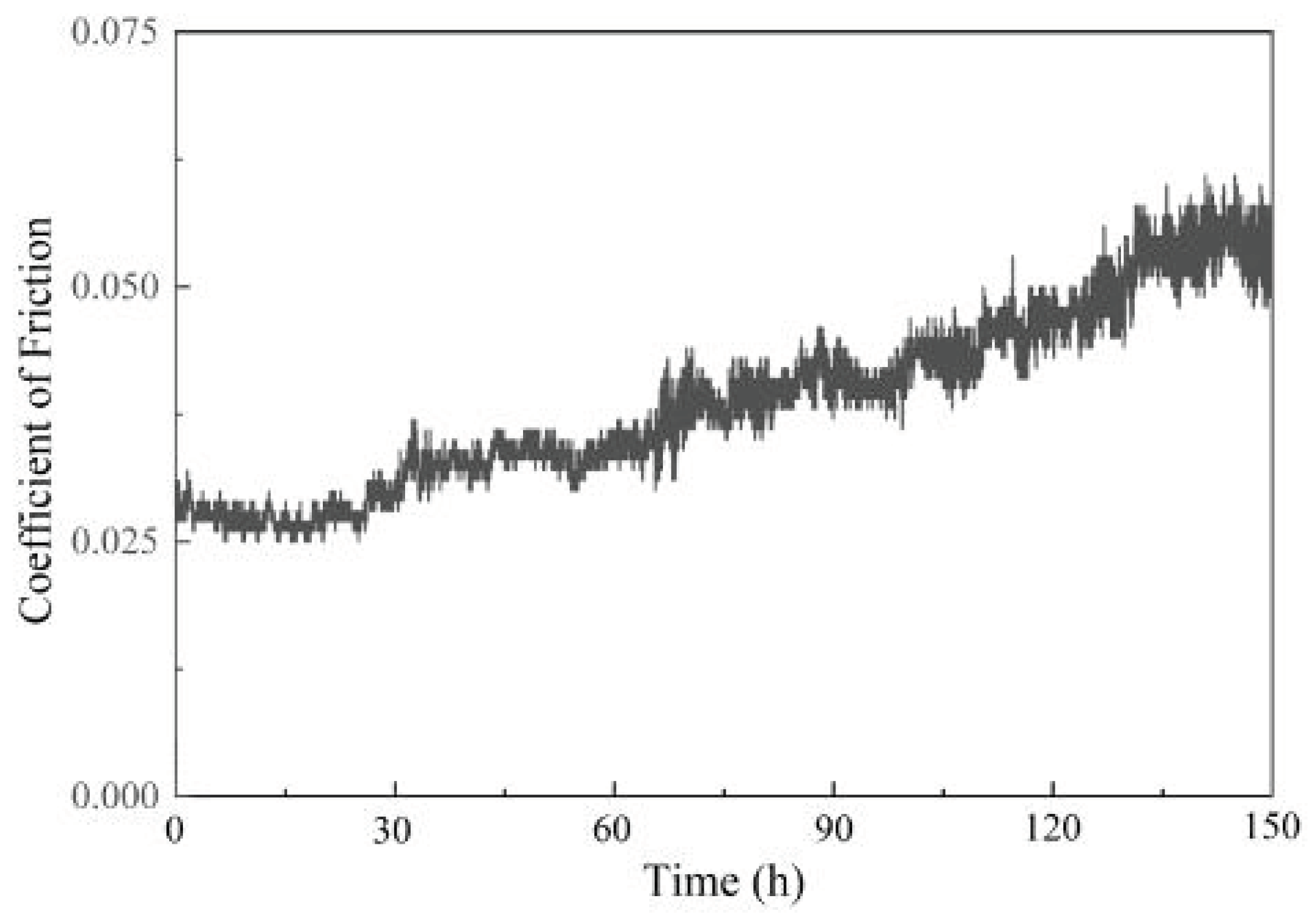
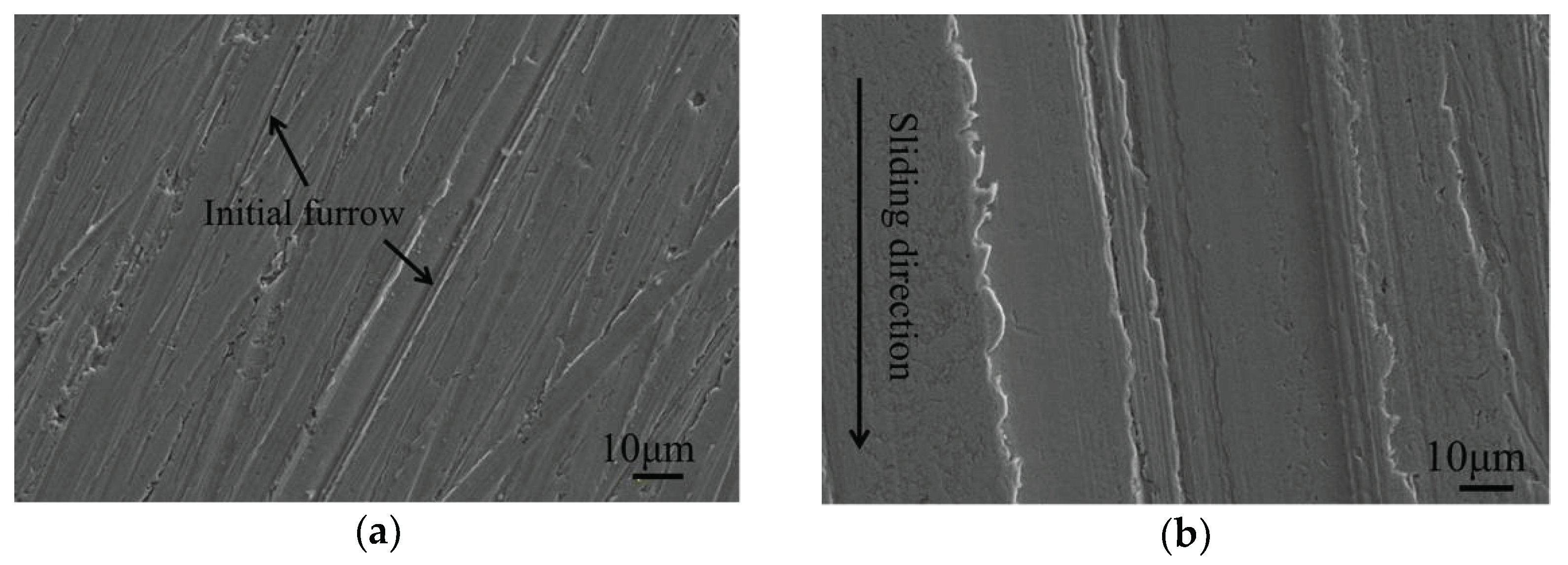
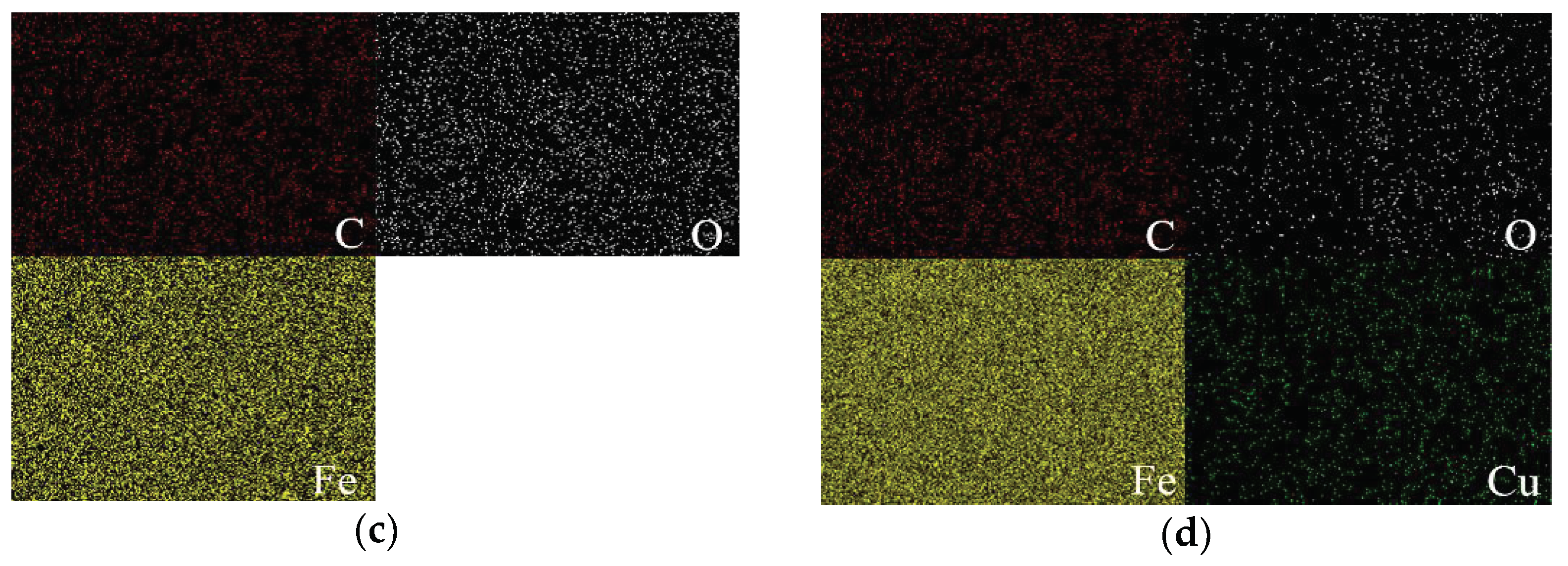

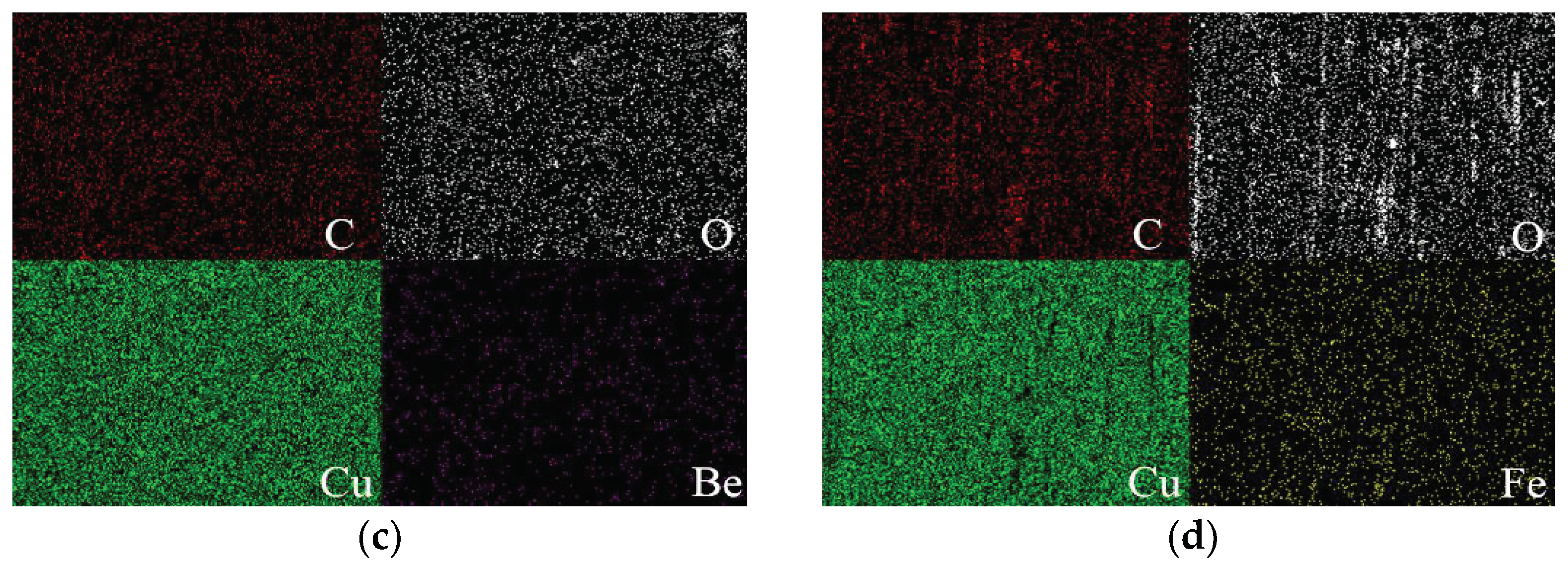
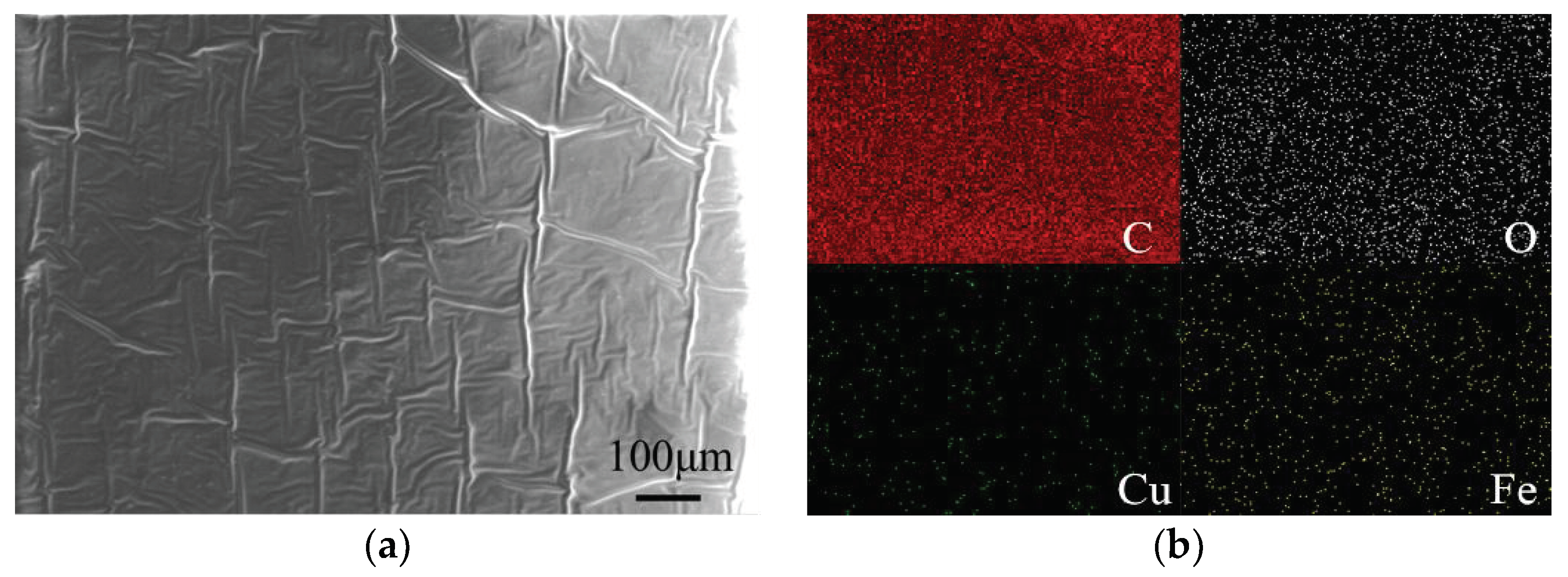

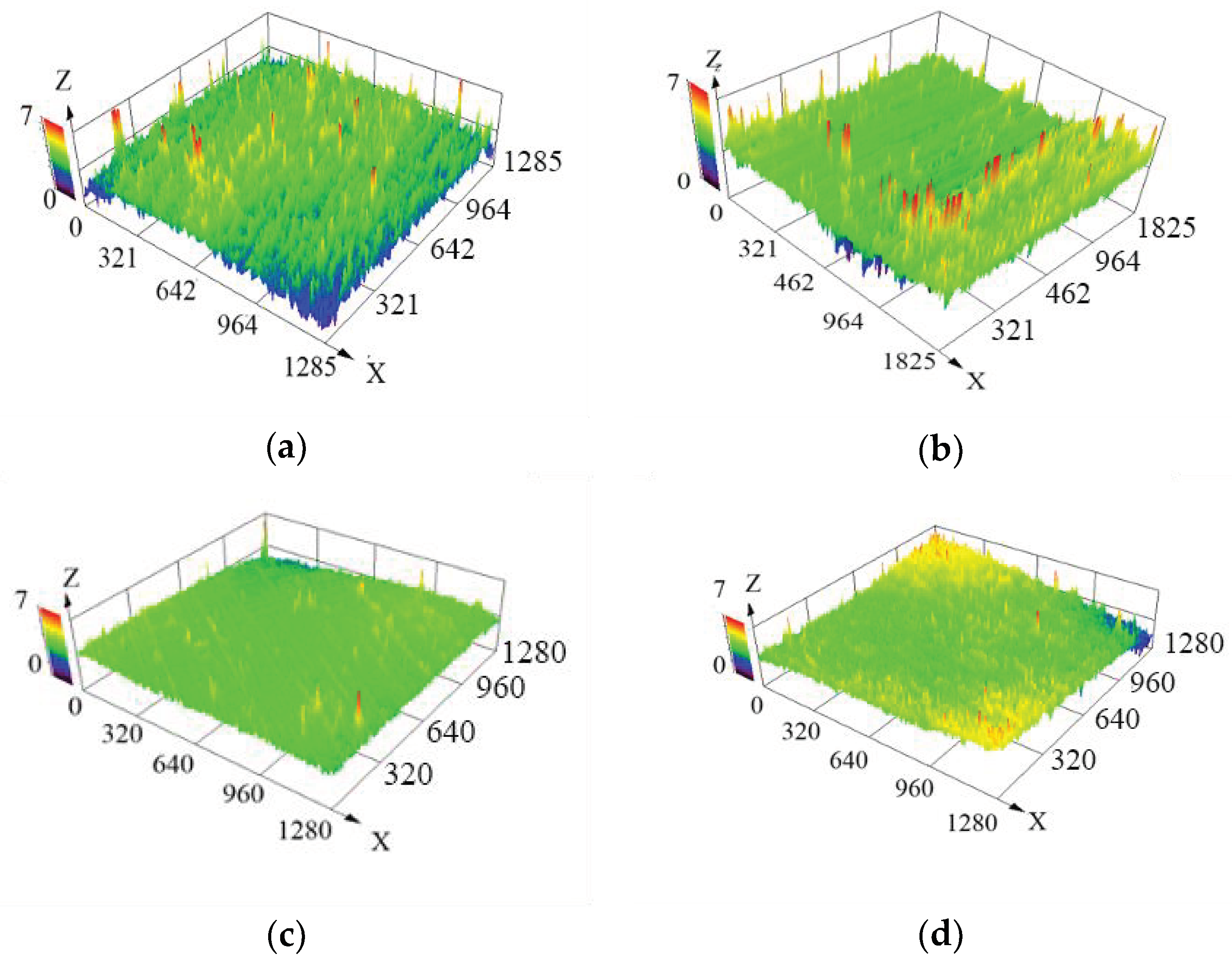
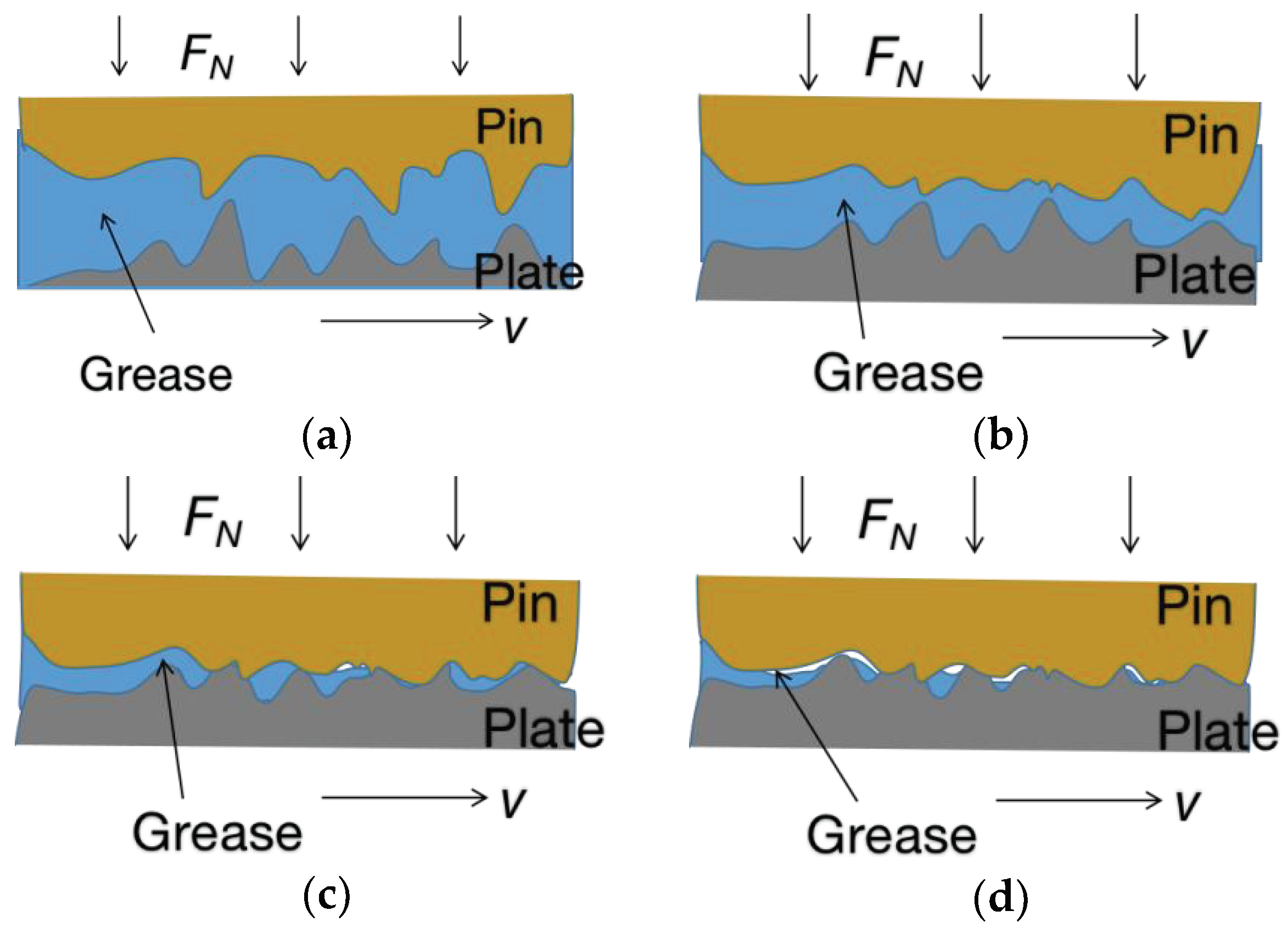
| Wear Volume (mm3) | Specific Wear Rate (mm3/Nm) | |
|---|---|---|
| QBe2 beryllium | 9 × 10−4 | 7.407 × 10−12 |
| bronze38CrMoAlA steel | 4 × 10−4 | 3.292 × 10−12 |
| Sample | Wear Volume (mm3) | Specific Wear Rate (mm3/Nm) |
|---|---|---|
| QBe2 beryllium bronze | 439.872 | 1.3833 × 102 |
| 38CrMoAlA steel | 899.625 | 2.8282 × 102 |
Disclaimer/Publisher’s Note: The statements, opinions and data contained in all publications are solely those of the individual author(s) and contributor(s) and not of MDPI and/or the editor(s). MDPI and/or the editor(s) disclaim responsibility for any injury to people or property resulting from any ideas, methods, instructions or products referred to in the content. |
© 2023 by the authors. Licensee MDPI, Basel, Switzerland. This article is an open access article distributed under the terms and conditions of the Creative Commons Attribution (CC BY) license (https://creativecommons.org/licenses/by/4.0/).
Share and Cite
Liang, C.; Zhou, J.; Wang, Y.; Peng, Z. Reduced Friction and Excellent Anti-Wear Performance of QBe2 Beryllium Bronze against 38CrMoAlA Steel in Pneumatic Downhole Motor under Grease Lubrication. Metals 2023, 13, 266. https://doi.org/10.3390/met13020266
Liang C, Zhou J, Wang Y, Peng Z. Reduced Friction and Excellent Anti-Wear Performance of QBe2 Beryllium Bronze against 38CrMoAlA Steel in Pneumatic Downhole Motor under Grease Lubrication. Metals. 2023; 13(2):266. https://doi.org/10.3390/met13020266
Chicago/Turabian StyleLiang, Chenfan, Jing Zhou, Yu Wang, and Zhijian Peng. 2023. "Reduced Friction and Excellent Anti-Wear Performance of QBe2 Beryllium Bronze against 38CrMoAlA Steel in Pneumatic Downhole Motor under Grease Lubrication" Metals 13, no. 2: 266. https://doi.org/10.3390/met13020266
APA StyleLiang, C., Zhou, J., Wang, Y., & Peng, Z. (2023). Reduced Friction and Excellent Anti-Wear Performance of QBe2 Beryllium Bronze against 38CrMoAlA Steel in Pneumatic Downhole Motor under Grease Lubrication. Metals, 13(2), 266. https://doi.org/10.3390/met13020266








